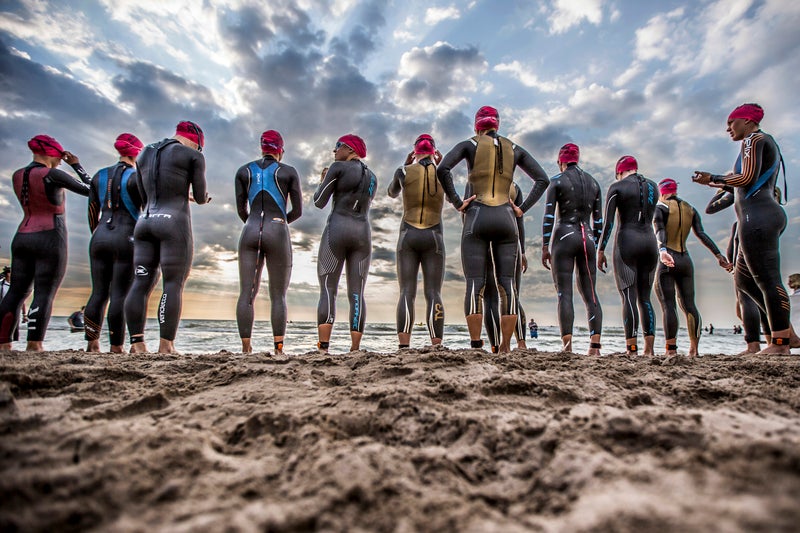The Women For Tri Initiative—Focus And First Steps

Photo: Gani Pinero/Endurapix
I recently joined the founding advisory board of an Ironman/Life Time Fitness co-initiative called Women for Tri, which was established to grow female participation in triathlon. As the oldest and largest media entity dedicated to the sport, Triathlete is part of the ecosystem. The health of our business is directly tied to the vitality of the sport, and our editorial mission of informing and inspiring triathletes of all abilities and interests helps nurture a sustainable growth. Our male-heavy demographic is a mirror of the gender makeup of the sport, especially in the longer distances, and we are left scratching our heads at the same fundamental question that faces organizations like Ironman and Life Time: Why are there so many more men than women doing triathlon? Of course there are a lot of hypotheses out there that are as valid as they are varied, but we haven’t reached any absolute conclusions that can inform a truly productive course of action.
On a personal level, I’ve been doing triathlon for more than a decade, and the sport has become a deeply ingrained part of who I am. I want to be part of an organized effort to encourage other women to get into triathlon so they too can glimpse a personal potential they never imagined.
The first Women For Tri board meeting was held at Ironman headquarters in Tampa, Florida, earlier this week. There are 12 board members, all very passionate triathletes who each bring distinct experience and acumen to the table. Ironman CEO Andrew Messick and CMO Christopher Stadler were also there, as well as Kimo Seymour from Life Time Fitness. Co-leading the founding board are Lindsey Kurhajetz from Life Time Fitness and Ironman’s Amanda Wregg.
The goal of the Women for Tri board is two-pronged: First, identify the actual barriers to entry for women in the sport through research and analysis (both quantitative and qualitative) and, second, establish a targeted plan of action to eliminate those hurdles, leveraging shared resources and findings. We collectively articulated a mission statement, and the crux is this:
Identify and diminish primary barriers to entry, and mobilize triathlon advocates to increase growth of new female athletes across all distances and among all athletic abilities.
The real priority of the Women for Tri board, as emphasized by our board membership and Ironman/Life Time leadership, is to grow the female base at all levels. As market leaders, the two organizations are positioned to be major beneficiaries of such a movement, but the broader effort, for which they are shouldering a significant investment, should effectively raise numbers across the board. The goal is to grow female participation in the U.S. by 10 percent in five years. The gender skew isn’t just an American phenomenon, and the intention is to eventually roll out the initiative abroad in countries like France, where only eight percent of people who raced Ironman and Ironman 70.3 last year were women (as opposed to 32 percent in the U.S.).
RELATED: Ironman And Life Time Announce “Women For Tri” Board Advisors
A separate but corollary discussion to encouraging more women into triathlon is the issue of equal qualifying spots for professional men and women at the Ironman World Championship in Kona. We spent a lot of time discussing both sides of the issue. Currently there are 50 spots for pro men, while there are 35 slots for pro women. Ironman CEO Messick says this disparate slot count is a representation of the male-female proportion of professional triathletes racing on the Ironman circuit. His position has been that there are 50 pro men who are competitive enough to factor into the Kona race dynamic and have a legitimate shot at a top finish at the world championship. As an example, he cited pro Ronnie Schildknecht, who was at the bottom of the KPR standings heading into Kona last year but still finished 12th. He says that the pro women’s field isn’t yet deep enough to justify 50 slots, and given the rigidly static number of available Kona qualifying slots, adding 15 to the pro women’s field would require taking those slots away from other people, potentially the pro men.
Women For Tri board member and longtime pro triathlete Hillary Biscay provided a counterpoint to the discussion that was incredibly thoughtful, impassioned and reasoned. It’s an issue of equal opportunity—pure and simple—she said. Triathlon, which has historically championed gender equality in professional sport (men and women race together, there is equal prize purse money), can set an important and impactful precedent by giving athletes the same opportunity to compete on the sport’s most prominent stage. What kind of message are we sending to existing and aspiring female triathletes—and young women everywhere—with a disparity that doesn’t give women an equal chance to rise to the challenge at triathlon’s highest level?
It’s an important dialogue that will continue in earnest as part of this initiative. I understand the disconnect between an effort to encourage more women into the sport and unequal Kona slots, but I also see these as two separate issues. Giving women equal treatment is always a moral imperative. But if Ironman gave you 15 slots tomorrow and said, “take these slots and use them to grow women’s triathlon,” what would you do? Who would you give them to?
After just wrapping our first meeting, we are already immersed in our sub-committees as we pursue next steps. I’m really encouraged by the collaborative spirit of the Women For Tri initiative, the smart and passionate people that have rallied around this cause, and the massive potential we have to make an impact in growing the sport.
RELATED: Ironman And Life Time Announce “Women For Tri” Initiative